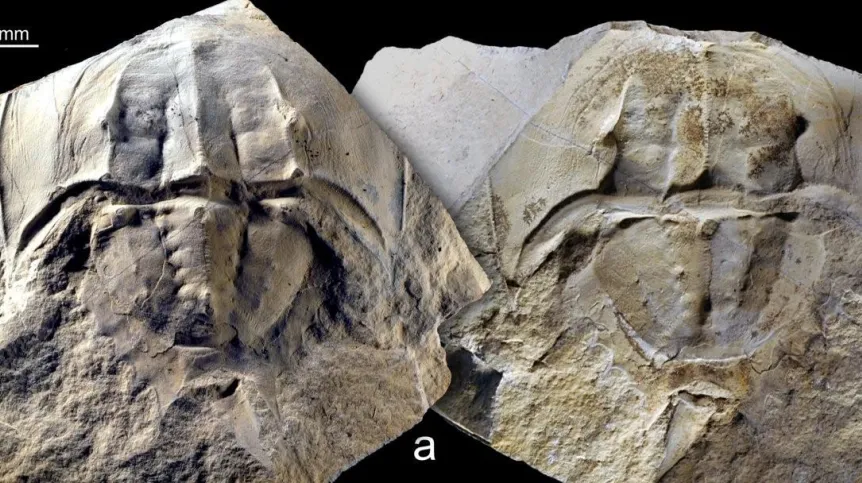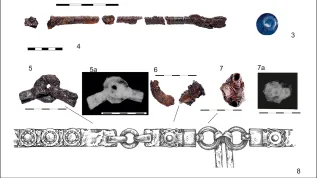
The oldest preserved in the fossil record of cuticle moulting moment in arthropods, from 365 million years ago, has been described by Polish scientists in the latest issue of the prestigious journal "Scientific Reports" (Nature Publishing Group).
Few centimetre long Devonian trilobite specimen was found in 2013 during paleontological work in the Świętokrzyskie Mountains. Computer microtomography examination showed that it was an exceptionally well-preserved specimen with adjacent exuviae, moulted exoskeleton.
Trilobites are a group of extinct marine arthropods that went extinct at the end of the Permian (approx. 250 million years ago), during the most disastrous crisis of biodiversity in Earth\'s history. 95 percent of all species disappeared from the face of the blue planet.
"It\'s a very interesting group of animals. Unfortunately, all the knowledge about their physiology comes from specimens preserved in a fossil state and their separated exuviae. The process of moulting exuviae has been the subject of studies of palaeobiologists for decades" - explained Dr. Błażej Błażejowski from the Institute of Paleobiology PAS, one of the authors of the publication.
Fortunately for researchers, the discovered animal did not survive the process, but was preserved in a fossil state, creating a window to the conditions fixed in time and space until today.
"A similarly preserved specimen during cuticle moulting, which could be used to study this moment, in addition to such excellent condition that we could detect microscopic wrinkles on the head shield (cephalon), due to the enormous effort of the animal, has not been described before anywhere in the world" - added Dr. Błażejowski.
This allowed the scientists to solve another mystery. In the collection of Jurassic horseshoe crabs - arthropods from the Polish territory, which survived several mass extinctions, including that at the end of the Paleozoic, they found individuals with similar wrinkles on the cephalothorax, like in trilobites. So far, this phenomenon has been interpreted in different ways, but never as cuticle moulting. Based on a comparison of representatives of both groups, it became apparent to researchers. Horseshoe crabs are a group of arthropods that are not only related to trilobites, but also for nearly 200 million years (since Ordovician) lived with them on Earth. Unlike trilobites, horseshoe crabs survived to this day, and the oldest representative of the genus Limulus (living to this day off the coast of the US), was found in the quarry Owadów-Brzezinki and described jointly by the prematurely deceased Dr. Adrian Kin and Dr. Błażej Błażejowski.
The research was conducted within the framework of the research project of the National Science Centre, led by Dr. Błażej Błażejowski from the Institute of Paleobiology PAS. Co-authors of the publication "A moment from before 365 Ma frozen in time and space" are: Piotr Gieszcz (Association of Polish Climatologists), Prof. Carlton E. Brett (University of Cincinnati, USA) and Dr. Marcin Binkowski (University of Silesia in Katowice).
PAP - Science and Scholarship in Poland, Szymon Zdziebłowski
szz/ mrt/
tr. RL
Photo by B. Błażejowski













